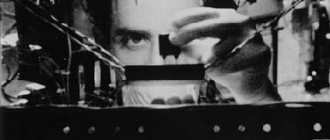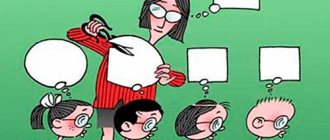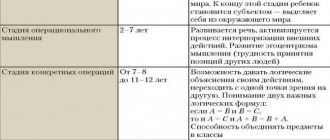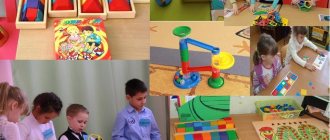Human mental activity is multifaceted. After all, each of us has to face a variety of tasks that require our own, special approach. Imaginative thinking is directly related to a person’s perception of objects in the real world. It occurs in close interaction with other mental processes - memory, attention, imagination.
Does every person have the ability to think figuratively?
The development of imaginative thinking is of interest to many, but there are adults who are not confident in their abilities. It is necessary to understand that in human thinking some processes are carried out visually. Sometimes a person realizes that he operates with his past perceptions, their memories, as if they were real objects. To evaluate this feature, you can answer the following three questions:
- What material were your favorite shoes made of when you were 15? What did they feel like?
- How many windows do your grandmother (your grandfather, second cousin) have in the village house?
- What will the Latin letter S look like if it is “mirrored” in the opposite direction?
Typically, people who answer the first of these questions imagine the shoes they wore as a teenager, “touching” their surface in their mind's eye. As for the second question, a person usually retrieves the image of this house from memory, “walks around” it, counting the windows. As for the letter S, usually in the process of mentally “mirroring” it, a person mentally rotates it and “looks” at the result. These examples show that the same mental processes are involved in the process of reproducing images.
Imaginative thinking in preschool children
Visual-figurative thinking is the main type of thinking in a child in preschool age. It is with its help that the baby performs most operations. By the time a child enters this period of development, he can only perform those tasks that can be done with a tool or with his hands. Such actions are aimed at achieving immediate results. As a child develops, his actions become more and more complex. Problems of another type arise in which the result of the baby’s activity will not be direct, but will be indirect. The simplest example is throwing a ball against a wall. The ball is thrown so that the child can then catch it again. The same tasks in which the result of actions is indirect include playing with a construction set, mechanical toys, etc.
The development of visual-figurative thinking in children is an important task. After all, in order to solve complex problems, you cannot do without the ability to manage images. Also, this type of thinking teaches the child to react to images presented by the outside world. Therefore, for a preschooler, the development of imaginative thinking is the key to successful learning in the lower grades. In middle preschool age, children learn to hold images of various objects in their imagination and consolidate patterns. For example, a cucumber is associated with an oval shape, a square with the shape of a table surface.
Types of thinking
A lot of them. Because this process itself captures a huge amount of information and conveys it to our brain in many ways. Depending on the way information is transmitted, psychology distinguishes the following types of thinking processes.
Table of thinking types:
| By content | By degree of reflection | By meaningfulness | According to personal characteristics |
| Visual-figurative | Analytical | Critical | Male |
| Visually effective | Intuitive | free | Women's |
| Verbal-logical | Realistic | Involuntary | Positive |
| Autistic | Unconscious | Negative | |
| Egocentric | Strategic | ||
| Idealistic | |||
| Creative | |||
| By novelty | By task | Irrational | |
| Creative | Theoretical | Rational | |
| Reproductive | Practical | Professional |
By content
Depending on what predominates in a person when processing information (picture, action or word), several types are distinguished.
Visual-figurative
Here information is conveyed in specific images. Such people think in images when any situation arises. For example, you need to remember traffic tickets. But the wording, for the life of me, doesn’t stick in my memory. And you imagine a crossroads in your head: you are an obstacle on the right; and a goat driver who doesn't let you pass.
This kind of thinking operation helps to remember something, but with the help of an image, a picture, and not meticulously every word. Although this is sometimes necessary.
This type is formed in children of preschool age, when the child learns about the world, gets acquainted with the pictures and sounds of the surrounding reality. It is closely related to the imagination and is prevalent among designers, artists, musicians, and writers.
Visually effective
It uses not only knowledge, the concept of some subject. And a connection between the object and the action is formed. For example, when a copywriter hears the word “computer,” he immediately imagines how he writes text. When the cook hears the word “saucepan,” he sees himself cooking mashed potatoes. That is, the characteristic of this type is action based on experience.
This is noticeable in childhood, when a child breaks a toy to figure out what it has inside.
Verbal-logical
Here most of the properties of this cognitive process are already brought up. This type is characterized by the manipulation of concepts, experiences and actions. A person can talk about some process without performing any actions. Sometimes it is simply called logical; everything here comes from logic and operations with it. See the article for more details on what logical thinking is and how to develop it.
For example, when we say that the kettle is hot and there is no need to touch it, we will not go to touch it. Our thinking, already at a distance, can allow us to imagine what the consequences of such an action will be.
Are you wondering how much logical thinking activity you have? I suggest taking tests for logical thinking.
By task
When we urgently need to think or make a decision, we turn on other thought processes. We no longer need to work with images and words. It is important to apply in practice or theory new operations with which we were not previously unfamiliar. This is where the next species come in. Some call these types of scientific thinking, but they are not limited to science.
Theoretical
This is the process of studying a set of laws, rules that arise on the basis of theoretical knowledge that a person already had. For example, Einstein derived the theory of relativity on the basis of existing practical knowledge and experience. With the help of this type, new theories in science appear.
The very interesting Bennett Technical Comprehension Test will show you how you understand technical science.
Practical
This is the other side of the theoretical thought process. Here, theory is derived first, and then practice. New work plans, schemes, and projects are quickly becoming reality. Here is a striking example of this – vaccination for COVID-19. The vaccine was made on the basis of theoretical data, but there is no time to test it; there is not enough research to confirm its benefits.
The main disadvantage of this type is the lack of time, so some theories fall apart miserably without practical confirmation.
By degree of reflection
Here we are talking about how a person processes information. Sometimes the listed types are called types of psychological thinking, since they describe the psychological properties of mental operations.
Analytical
It is based on logic, such a process is not limited by time, it occurs in stages. Each next step is based on the previous one. We analyze something almost every day: people’s behavior, work issues, etc. Analysis is needed to take the right steps, to gain a positive experience.
Intuitive
This is the exact opposite of analytical. Here the process happens quickly, often even unconsciously. They say about him “I understood this intuitively”, “intuition worked”, and a person makes decisions based on “feelings” - intuitive thinking.
There is no talk about any logical connections or steps. Everything happens “according to the dictates of the heart.”
Realistic
This is a subtype of logical thinking, so sometimes it is difficult to single out one classification of this cognitive process - here all types overlap with each other.
The essence of realistic mental activity is that a person gives an adequate assessment of reality. All his actions are strictly subject to the laws of logic. This is definitely not a dreamer; he solves all his problems based on the real state of affairs. Such people are critical and make demands on themselves and others.
Autistic
It is based on a person’s internal desires, which sometimes have nothing to do with reality. Such people do not have criticality, but they have illogical concepts that can even be called an illusion. People with such a dominant mindset are sometimes quite difficult to understand, since their goal is to live up to their illusions in their reality. But this is not a disease, but a special type of thinking.
Egocentric
Most people don't even know that this type of thinking exists, but it does exist! Some people encounter this thinking almost every day when communicating with immature individuals. Unfortunately, there are such adults, but, in general, this type is characteristic of children.
This population of ours has its own Self at the center of all life, so everything is perceived only through such a prism. At the same time, the feelings and desires of other people are not valuable and are not taken into account.
By novelty
We are smart people, but sometimes at the expense of someone, and sometimes thanks to our ideas, we achieve success in life. If someone managed to plagiarize unnoticed, he is perceived as a BRAIN who can invent and create something like that. And there are people who really are generators of ideas. And this is also controlled by a certain type of thinking.
Creative
A creative form of thinking can make a masterpiece out of nothing. In this case, everything that was once perceived by imagination and memory is used. A creative person looks at an ordinary white wall and sees a painted picture; looks at a snag - and sees a beautiful, uncouth ship, etc. Creative people look for new ways, sources, react in an original way and draw conclusions.
There are no types of creative thinking as such; the creative process is divided into stages: preparation, incubation (the time when you need to “bring out” the idea), insight, testing or implementation of the idea. The creative thought process is also called artistic, and their types and stages are the same.
Reproductive
A person with this mindset lives according to a pattern, a stereotype, he cannot go beyond the boundaries. In activity, it reproduces exactly those actions that come from previously acquired knowledge and results. It is very difficult for such people to come up with something creative, new, original.
Take the test How stereotypical is your thinking and find out how you are with originality and stereotypes.
By meaningfulness
It takes into account how much a person reacts to external events, believes everything or checks it himself, how aware and critically he evaluates everything that happens to him.
Critical
Critical thinking is an important skill for a modern person. Why skill? Because it can be developed. This type is important because it helps a person not to live “by the rules,” but to methodically question, find weak points in some statement or situation, and work with concepts. And this whole system of operations helps to formulate and justify YOUR thoughts.
There are no such types of critical thinking. There are mental operations on which it is based: logic, argumentation, analysis, inference, conclusion.
free
Controlled by the will and consciousness of a person. Here a person is the master of his thoughts. It is he who regulates what to think about, what to decide, what conclusions to draw.
Involuntary
It appears by itself, without any effort of human will. By nature, such thinking manifests itself automatically. It can also appear under the influence of some external stimuli. For example, we are cold and don’t think twice about putting on a jacket. Our brain decided this, but sometimes we do it automatically.
Unconscious
This is an abstract form when a person comprehends something based on past experience, doubts, fears, beliefs, feelings, sensations. He himself does not understand why he makes a certain decision. But it is accepted and the action is done. It was the unconscious part of the mind that was at work. She is beyond control.
According to personal characteristics
This subsection takes into account all social roles, character or inclinations of a person. Depending on what gender we are, which hemisphere is dominant, what role we play, where we work, with whom we communicate, who raised us and how, certain groups of types of thought processes appear.
Male
Most often based on logic, actions strictly according to a given plan. Men have a more pronounced desire for a goal, they are characterized by rationality and a clear separation of reason from emotions (if a compassionate mother has not raised a rag out of a man). In the thinking of men, as a rule, an algorithm is built for the transition from words to actions, from actions to results.
Male and female thinking
Women's
Typically, women's thought processes are based on intuition. They almost always show emotions. Women's thinking is more susceptible to the influence of feelings and mood, less logic and rationality in actions. But in certain situations, women can perfectly calculate, analyze and plan.
And here’s a surprise for you - the test Male or female thinking?, which will help you understand what you are guided by: male logic or female intuition.
Positive
It helps people, even in a dark period of life, to see something good. This type of mental activity is focused on results, overcoming obstacles and obstacles. People with this type are optimists.
A positive attitude always makes it possible to react constructively to ups and downs, soberly assess the situation, set yourself up for success and strive for the result of your actions.
Negative
People with such thinking reflect total dissatisfaction with life; they are obvious pessimists. Everything is simple here - unprocessed bitterness and the habit of complaining give their results. People with this type of reaction to reality see obstacles in everything, so they rarely succeed in achieving their goals in life. They want to constantly evoke sympathy for themselves and receive support from others.
Strategic
This kind of thinking allows us to call a person a “strategist.” People with this type clearly plan steps far ahead, can assess obstacles and predict the future. They will not waste time on empty talk or waste of time if they have a goal. Such people will go to her, no matter what, effectively achieving her. More often than not, strategic behavior leads to leadership positions.
Idealistic
This is the type of dreamer. Idealists do not perceive the world with all its hardships and problems. They create their world in their imagination. And they persistently try to implement their ideally thought-out model into the realities of life. But this doesn’t happen, so they take everything very seriously. They are often unobservant and distracted by small things.
Creative
Such people can unite the incompatible. From different information they can make a single news or text. A person with this type is not afraid of monotonous, monotonous work. He has no need for change, variety and brightness. They are content to put everything together at work, in conversation, and in interpersonal relationships.
Irrational
This is the opposite of logic. An irrational person cannot explain his actions, but firmly believes in their correctness. With this he can infect even the most sophisticated skeptic. Although the latter will be perplexed as to how he could fall for the bait of illogicality and incorrectness. Such is the power of this thinking!
Rational
A rational person relies entirely on facts, knowledge, and skills. There is no attention to emotions and feelings. A rational person always tries to give a sober, logical, constructive assessment of what is happening. A huge advantage of this type is quick decision-making, without hesitation or doubt.
Professional
Separately, I would like to highlight professional thinking, although there is no such type in the psychological literature. This is the predominance of methods for solving problems, methods of analysis, and making professional decisions adopted in a particular profession.
There are indirect types of professional thinking - this is the mental activity that may be needed in this profession. Productive, creative, reproductive, theoretical, practical, visual-figurative, verbal-logical, analytical, intuitive types of thinking are involved here. They all characterize and complement the professional look.
In addition, depending on where exactly a person works, one can distinguish managerial, clinical, operational, pedagogical and other types of mental activity.
Origami
Making paper figures is very popular among parents and teachers. This requires only a few items - cardboard, paper, scissors. Typically, young children are not very interested in the complex process of folding paper until they see the result. Therefore, it’s good for an adult to start by demonstrating the “miracles” of this type of craft.
Creative thinking. Junior School
As the child gets older, he gradually ceases to rely on visual images in his thinking. The possibilities of thinking become more and more broad, the baby learns to give more and more broad characteristics to objects. He learns to operate with different images in memory, transform them - for example, connect objects and separate them in his imagination. Various games contribute to the development of logical and imaginative thinking:
- Board games (eg dominoes, lotto). Special puzzles can also arouse your child’s interest.
- Reading various children's books, colorful magazines with interesting descriptions, encyclopedias.
- Creative work: drawing, macrame, creating appliqués. Modeling also helps the development of imaginative thinking in schoolchildren.
- Watching cartoons and films about the world around you.
- Family holidays, travel.
- Walk outdoors.
Game "What does it look like?"
A good exercise for developing visual-figurative thinking in preschoolers is the game “What does this look like?” It allows the child to learn to approach problems in an original and creative way. The task is that for each picture (circle, square, triangle, spiral, or abstract drawing) you need to come up with as many associations as possible. This exercise is good to do in a group of children. This game contributes well to the development of imaginative thinking in younger schoolchildren.
Methods and techniques for teaching adults: how to improve the skill?
A person does not get imagination, fantasy and creativity at the beginning of his life. And his task is to improve these qualities using various methods.
Basic principles
- Mental representation of objects (rack, rain, horse, entrance).
- Reproduction of events and aromas in the head (wedding, words at a concert, church service, scandal in a supermarket).
- Mental representation of illusory and fantastic objects (Kikimora, troll, Cinderella, Beast, Luntik).
- Technique of the square of lateral vision (look straight and at the same time consider the peripheral field of vision).
- Representation of geometric shapes in 3D.
- Mental reproduction of feelings and emotions (sorrow, interest, love, admiration).
Independent exercises
- Constructor collection.
- Tetris game.
- Write a letter to your 12-year-old self in the past.
- Write a story about an empty glass.
- Blots (look at a stain or blot and form an image of what it resembles).
- A drawing of a phrase (“a fly sat on the jam”, “fear has big eyes”).
- Composition of logically related objects (beer-water, rain-fountain).
Why is imaginative thinking necessary for adults?
Developed imaginative thinking is necessary in many professions - for example, designers cannot do without it. The phrase “draw me something bright and memorable” should not confuse the employee; on the contrary, these words should be a catalyst for mental activity. Working on imaginative thinking helps develop analytical abilities. Exercises for developing such skills will be useful not only for workers in creative professions, but also for all those who would like to broaden their horizons.
Development of abstract logical thinking
Logical thinking is considered the highest form of the thought process, although this can be argued, since creativity is not associated with it, but with imaginative thinking. But, one way or another, logic is necessary for an adult to solve a wide variety of problems: from everyday, everyday, to professional and scientific.
What to develop
Logical thinking is based on several mental operations:
- Analysis is the division of a single whole into separate significant elements, understanding the structure of things and phenomena, their systemic organization.
- Comparison is a comparison of individual elements of a system, individual things and phenomena in order to determine their similarities and differences.
- Synthesis is a transition from individual elements to the whole, a unification of parts, often associated with their combination in a new combination.
- Abstraction is a distraction from the unimportant or a transition from objective thinking to thinking using abstract concepts (numbers, formulas), replacing specific images with abstract concepts.
The first three basic operations can be illustrated by the common children's game of color pyramid. A child disassembles an already assembled pyramid and examines its rings - this is an analysis. Then, during the assembly process, he compares the rings by size, sometimes by color and shape - this is a comparison. Then he assembles a pyramid of individual elements - synthesis. This is how the thought process proceeds at the level of visual and effective thinking accessible to the baby. And we want to develop the logical, so we will perform operations not with rings and cubes, but with concepts.
Logical thinking also requires developed speech, since this thinking occurs in a conceptual form. Moreover, this applies not only to oral, but also to written speech, which in itself is more logical and orderly.
How to develop
Logical thinking is based on strict laws and rules that were developed by ancient philosophers, and logic has always been considered the art of thinking. Theoretical knowledge, although useful, is not sufficient for development. If you don’t know them, then this is not an obstacle to development. Practice and mastering skills are more important here. And thinking skills, just like any other skills, are formed during training. And for those who want to develop logic skills, we can offer several exercises.
Imaginative thinking: how to develop as an adult
Before starting the exercises, an adult needs to believe in himself, throw away the idea that he does not have a well-developed sense of humor, creativity, or imagination. Everyone has all these abilities - it’s just that, most likely, they ended up on the “outskirts” of consciousness.
Direct evidence that every person has imagination is the ability to recall visual images. Everyone remembers what their parent, girlfriend or boyfriend looks like. A person is also able to describe the features of the nearest metro station or favorite place in the city. You don’t need to spend a long time doing exercises to develop imaginative thinking in order to restore in your memory the small details of your favorite places, to remember what the houses and streets of your hometown look like. So, you can make an imaginary “travel” through time and again find yourself captivated by vivid memories. Therefore, you just need to work a little to expand the space of your imagination.
Fantasy binomial
A good way to develop imaginative thinking is an exercise called “Fantasy Binomial”. Its author is the famous storyteller Gianni Rodari. It must be said that the technique is suitable for both adults and children. The writer explains: ordinary associations do not develop imagination. For example, the phrase “horse - dog” does not give room for imagination, being just a mention of animals from the same semantic series.
Gianni Rodari's method promotes the development of artistic and imaginative thinking. The “binomial of fantasy” should ideally be determined by chance. For example, you can open a book (or different books) at random on different pages. You can combine two excerpts of phrases from advertising.
Human cognitive development
The entire human mental system requires constant development, starting from birth, and even certain genetic data, without development, can lead to degradation and loss. It was in this vein that the concept of cognitive thinking appeared, which literally means aimed at comprehensive development. Thus, by taking action to develop your thinking in different types and areas, you support cognitive development.
The concept of the human cognitive system is characterized by some basic properties, such as efficiency, algorithmicity, digestibility, adaptability and expressiveness. These are the components for constantly developing your thinking and obtaining positive results. According to research, each person, provided there is no damage, is born with approximately similar inclinations for cognitive development and his further success in this matter depends only on classes and exercises.
Storyteller's experiment
Gianni Rodari remembers experimenting with children in class with the randomly chosen word “wardrobe.” Taken separately, it would hardly be able to evoke any emotions - no one would laugh or cry when thinking about the closet. However, if you connect the concept of “closet” with the concept of “dog”, then everything becomes completely different. The easiest way to link these two images together is to use prepositions. For example, “dog in the closet”, “dog on the closet”. Then the imagination will suggest various images - it could be a dog running with its own booth on its back along the street. Or a dog who has a personal closet with different outfits.
Examples from life of some types of thinking
Example. The surgeon tells the nurse to sew. One word, but she already knows which tool to use, how to process it, and can even give advice if she sees something dangerous. In such a tandem, professional thinking is developed - she does not have a higher education, but she has experience, knowledge, intuition, and logic.
Several types are included here: in addition to professional, verbal-logical, practical, analytical, logical or intuitive, arbitrary.
Example. A guy wants to meet a girl, but right in front of her nose the waiter accidentally stains his coffee. The guy was taken aback and couldn’t do anything else but mumble: “It wasn’t necessary...”
But the acquaintance did not take place not because of coffee stains on the shirt. And because of the irrational thinking that entered the battle: “She will think that I am a mattress,” “She definitely thought that there was something wrong with me...”, “She will not want to communicate with someone like me.” A person gets bogged down in logically unfounded beliefs, plunges into excitement and panic. Next time it will be more difficult for him to approach and speak first.
Other methods
Some more ways to develop creative thinking:
- Working with droodles - scribbles with many meanings that need to be described. Such pictures are reminiscent of the doodles that a person draws while talking on the phone or listening to a boring lecture. However, the droodle has one peculiarity - its creators initially put meaning into it. In the picture below you can see droodles, which contribute to the development of imaginative thinking.
- Another way is to try to reproduce in your imagination the objects you just saw. A game called “Matches” helps a lot. To carry it out, you need to throw five matches on the table, look at them, turn away, and at the other end of the table depict their location with other five matches. It may not work at first, but practice will bring results over time. Each time you need to try to spend less time on playback. When it starts to work out, the number of matches can be increased.
- You can also come up with new functions for already familiar objects. For example, in the usual lace or nylon tights you can dry onions, use them as a decorative element for decorating flower pots, and make dolls from them.
- Another good way is to select epithets and anti-epithets for a word. To complete this exercise, you need to write down any word in the center of a sheet of paper, and on the right side - those definitions that suit it. On the left - place words that cannot be used in any way with this object or phenomenon. As an example, consider the word “person”. A person can be free, smart, rich, thin, advanced, etc. Definitions that do not fit this word are ancient, refractory, liquid, pointed.
- You can try to replay your last meeting with friends or colleagues. In the process of remembering, you need to try to remember: how many people were in the company? What were they wearing? What dishes were on the table? What was the conversation about, what topics were discussed? What experiences accompanied this meeting?
These exercises can be transformed at your discretion. The main thing about them is that these methods involve imaginative thinking. The more often you perform the exercises, the more this mental property will develop.









